|
|
Home →
Survival →
Flintknapping
Some Basic Flint
Knapping Techniques
Brian Merrill
demonstrating some basic flint knapping techniques
at the Wildwood Trackers
meeting in June 2004 |
|
|
First of all, PLEASE TAKE NOTE of a couple of very
important SAFETY ITEMS that are highlighted in the photo below:
- Safety Glasses: Flint knapping causes rock or glass fragments
to fly off in unforeseen directions. If one hits your eye, you could be
blinded.
- Bucket to catch rock and glass fragments.
- Onlookers keep your distance: There's no one sitting really
close to the flint knapper. Again, stray rock or glass fragments may fly
off unexpectedly and hit bystanders.
|
|
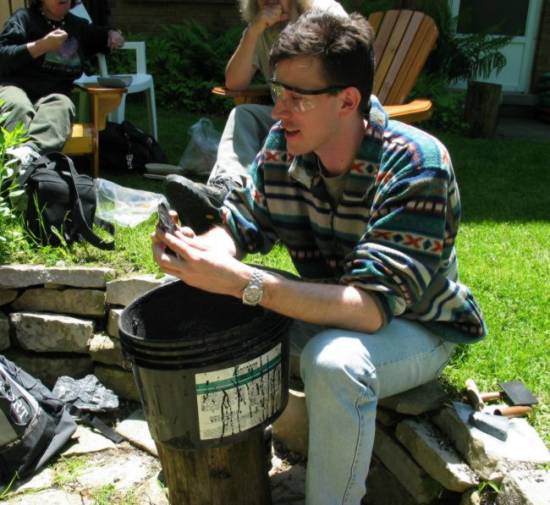 |
|
|
|
Here is a well-equipped flint knapping kit. From left to
right: A pad for pressure flaking, 3 percussion "whackers", a pressure
flaking tool, a chunk of a grinding stone, which has various uses, and
the all-important asfety glasses. |
|
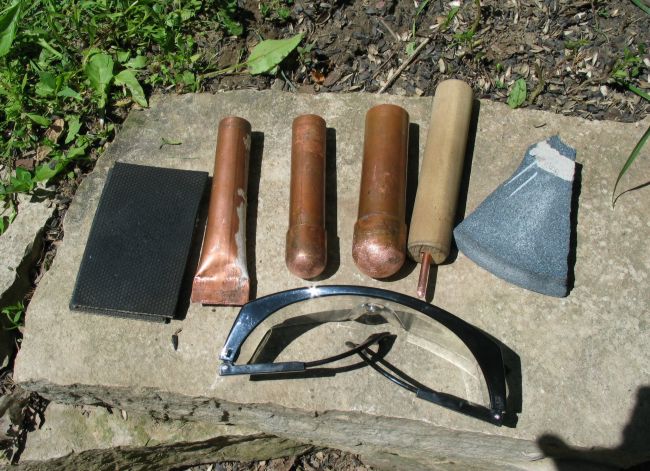 |
|
|
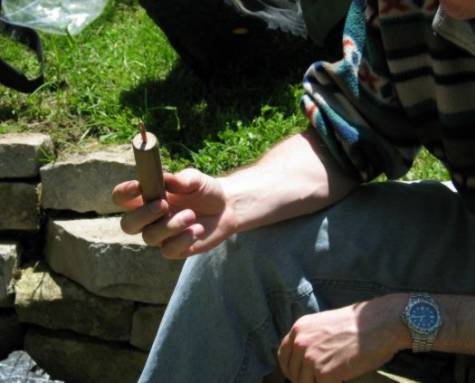 |
A basic pressure-flaking tool.
It's a large dowel with a piece of round copper stuck in the
end. Pressure flaking is the act of "pressing" (removing) thin flakes off
from a piece of stone or glass. It is usually used in making the
fine sharp edge of an arrowhead and other similar things. It
allows a very fine degree of control over the flintknapping
process, much more so than whacking your work with a stone,
which is the stereotypical flintknapping activity. |
|
|
|
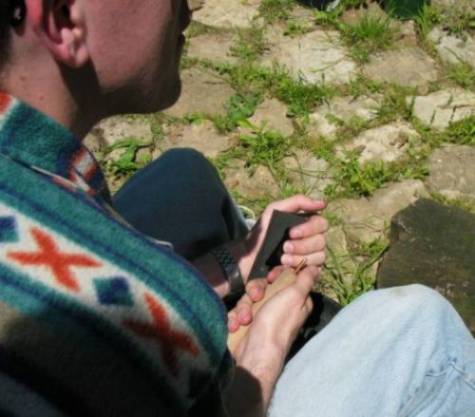 |
Pressure flaking: This is the
proper way to hold your "stone" that you're working on, against
the pad in your left hand (if you're right-handed), and the
pressure flaker in the other hand.
In this photo Brian is about to press a flake off his "stone"
using the tip of the pressure flaking tool.
|
|
|
|
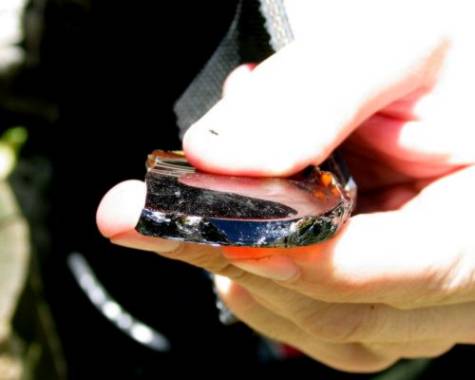 |
In this demonstration Brian is
using the bottom of a glass bottle to practice with, as flint is
hard to come by. Glass acts in much the same way as flint and
obsidian, and is therefore excellent to practice flintknapping. |
|
|
|
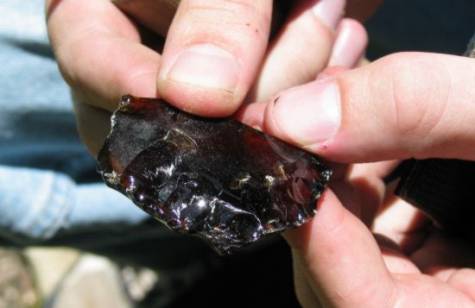 |
Here you can see where the
"flakes" have been pressed off from the piece of glass, using
the pressure flaking tool. |
|
|
|
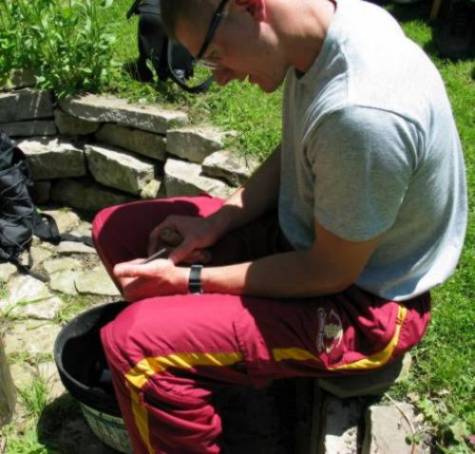 |
A first-timer having a go at
pressure flaking. |
|
|
|
|
|